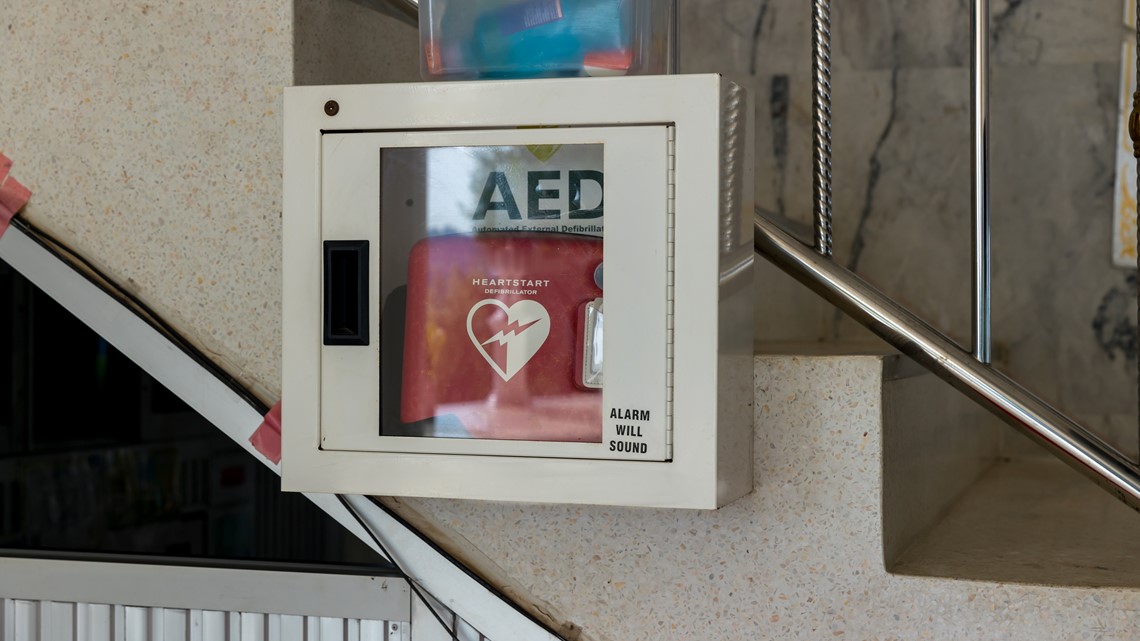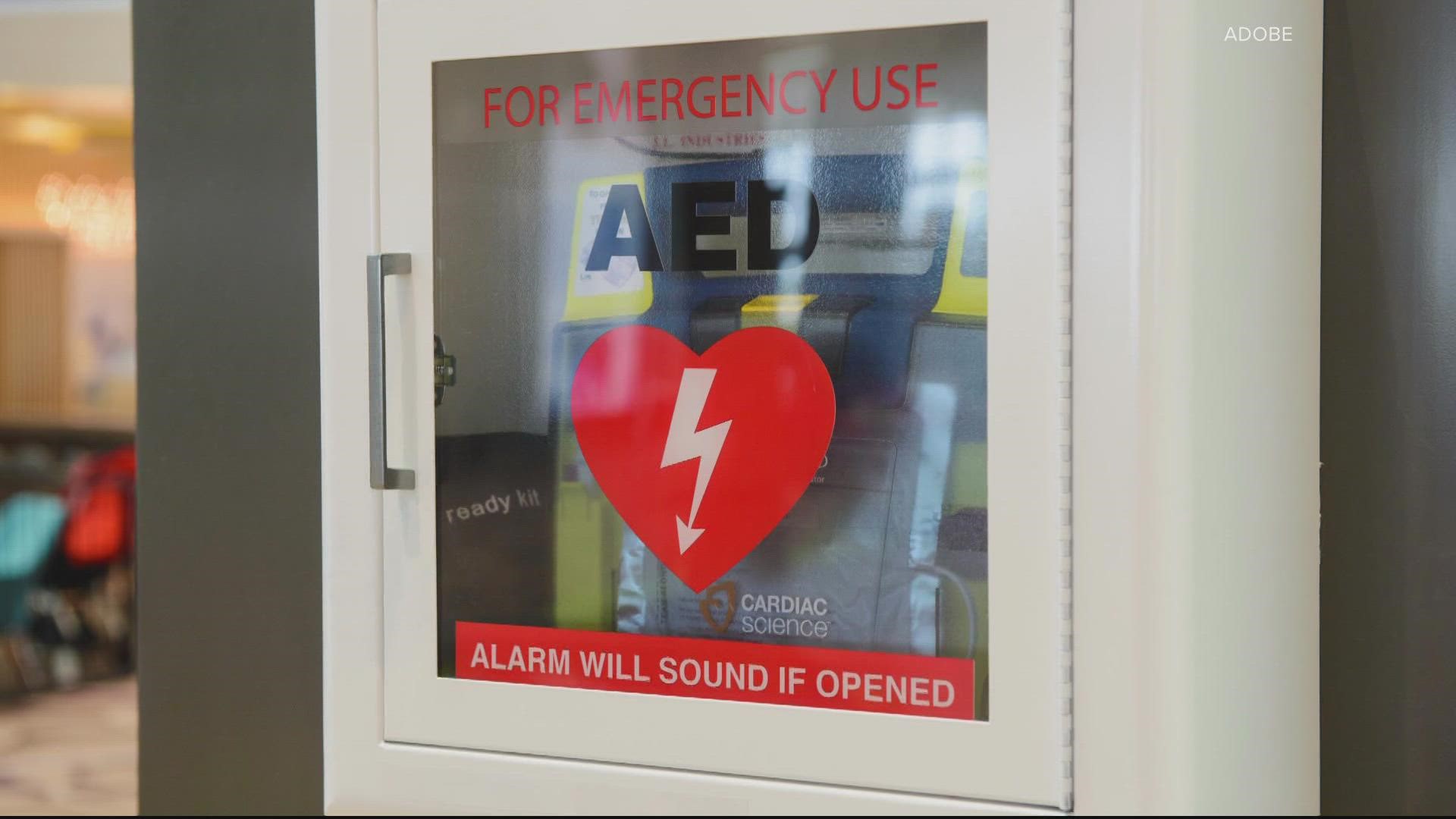WASHINGTON — Buffalo Bills safety Damar Hamlin is in critical condition following a collision and subsequent collapse during Monday night's game against the Cincinnati Bengals.
According to the team, his heartbeat was restored on the field, but he remains in the hospital as of Tuesday morning.
Events like these are a reminder of how precious life is–as well as how important it is to know what to do in a similar emergency.
According to on-field reports, an automated external defibrillator was used to help restore Damar Hamlin’s heartbeat after his collapse.
You might walk past one every day and give it little thought—so what is an AED, and how is it used?
THE QUESTION:
What is an AED, and how is it used?
THE SOURCES:
WHAT WE FOUND:
AEDs are designed to treat people experiencing sudden cardiac arrest–and the FDA says they’re most effective when used within minutes after someone’s collapse.
While some are designed for medical professionals—the ones you’ll find at swimming pools, shopping malls, schools, libraries, and office buildings will be for public use: that means they’ll include audio prompt instructions for how to use them, even if you’ve had no prior training.


We checked the laws in The District of Columbia, Maryland, and Virginia—all of which have some protection for so-called “Good Samaritans,” preventing liability for the person who stops to help someone in need.
In general, The Red Cross outlines these steps for using an AED on someone who has suffered cardiac arrest, who is over the age of 8, or who weighs more than 55 pounds:
- You or someone else should call 911
- Turn on the AED and listen for its voice prompts
- Attach the pads to the victim’s dry, uncovered chest, and make sure cables are connected to the AED
- As the machine analyzes the person’s pulse, make sure nobody else is touching them: shout “clear” before pressing the “shock” button, if the machine prompts you to.
- After that–or if no shock is advised,
- Begin CPR compressions.
You do not need to be officially CPR certified to perform CPR, but the CDC says you should be educated on the procedure. That means knowing where on someone’s chest to push, how to position them, and the rhythm to compress.
Remember, if you have specific questions, talk to experts at your workplace, check out more detailed instructions on the Red Cross website, or even sign up for a safety class.

